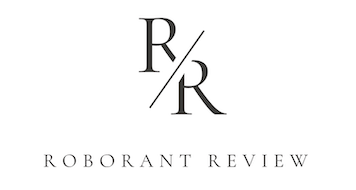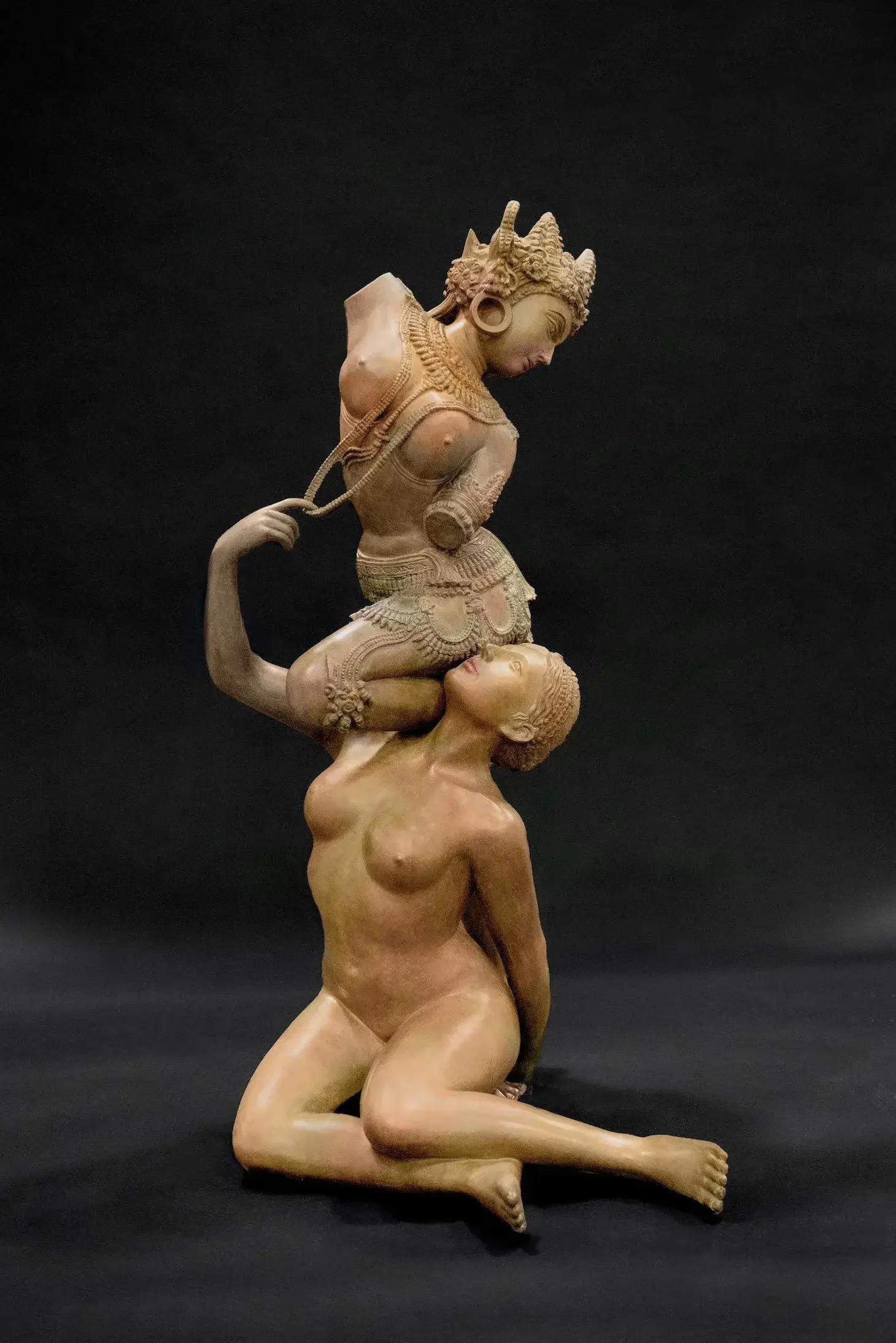Shahzia Sikander, Collective Behavior, Cantor Arts Center, Stanford University
By John Zarobell
The Cantor Arts Center recently opened a mid-career retrospective of the art of Shahzia Sikander that was originally shown as part of the Venice Biennale in 2023 and was organized by curators at the Cincinnati and Cleveland Museums of Art. The works in this presentation cover thirty-five years of art making from the late 1980s to the early 2020s, and many of the most important works from her career have been assembled for this exhibition. Scroll, which Sikander produced as the culmination of her training at the Lahore College of Art in 1989-90, is on view as well as her epic video work Parallax, a mind-bogglingly complex meditation on colonial history, extractivism, and subjectivity from 2013. The exhibition is nothing short of a revelation, and the challenge of displacing oneself to Palo Alto is more than rewarded by the sophisticated explorations of this artist, whose creations consistently seek to advance the intricate relations through which we understand ourselves and each other.
One is greeted in the lobby by a large golden sculpture of a mythological figure titled NOW (2023). The patinated sculpture realizes in solid form some of the ethereal imagery from Sikander’s drawings. A female figure, whose feet have been transformed into tendrils and whose long hair has taken the form of a ram’s horns, emerges from a lotus flower and hovers over the viewer. While the figure has the effect of welcoming viewers into Sikander’s world as soon as they enter the museum, the work is a translation of various figures from Sikander’s gouache and watercolor drawings, and its surprising presence in the lobby conjures some of Sikander’s imagistic creativity, albeit not so subtly and gracefully as her works on paper. Yet, seeing such a form realized as a positive volume in space forces us to question the solidity of our own self-conceptions: What would my avatar look like if realized as a sculpture?
Another sculpture upstairs, rendered in similar gilded brilliance, Promiscuous Intimacies (2020), brings forward more of the visual complexity of Sikander’s ineffable visual language by pairing two dynamic mythological forms, from East and West, into a unified sculpture. Here, the Western goddess looks up to the mythic Hindu warrior balanced on her shoulder. It is exciting to see Sikander exploring the media of sculpture, and also recently mosaic and stained glass, but she is known primarily for her aqueous paintings and the fleeting and transformative animations that depart from them, presented as videos. In these two realms, her fluid mastery enchants every work in the exhibition, leaving viewers beguiled and, at times, breathless.
To start at the beginning, Scroll is the early masterpiece that transformed miniature painting in the Indo-Persian tradition—which she studied at the National College of Arts in Lahore—into a vibrant form of contemporary art, or so it was understood when she first presented it in Pakistan in 1992. The opportunity to see this oft-cited work in the flesh is one of the motivations to see this show. At 1.6 meters long, it presents an extended self-portrait of the spaces the artist traversed in her youth. By personalizing the form of miniature, if showing herself always from behind, Sikander connected this storied tradition to the real world, demonstrating not only her mastery of the form, but her complete transformation of the genre into a temporal narrative that unfolds across architectural forms and courtyard spaces of Lahore in the 1970s and 80s. Also on view is a collage study for the work from 1988, which demonstrates just how modern and innovative her approach to composition and materials was, even though she was studying a traditional mode of painting. Look at the square tiles on the left and right, and you will see that they are made from cut-up photographs of bodies. By bringing a courtly art of miniature down to earth and imbuing it with sophisticated innovations, she breathed new life into it. Looking at Pakistani (and indeed Indian) contemporary art today, one perceives that this represents one of the most important innovations for the reconciliation of traditional culture with contemporary art in the South Asian context.
Nevertheless, Sikander chose to migrate and was enrolled at the Rhode Island School of Art and Design as an MFA student from 1993-95. One of her first gallery shows was actually in San Francisco, at the Todd Hosfelt Gallery in 1997, and this is the year that her career took off as she was included in many group exhibitions, including the Whitney Biennial. By 1998, she had her first solo exhibition at the Renaissance Society, and in 1999, another at the Hirshhorn Museum. In 2001, she recorded her drawings with digital photography as they evolved and brought together her first video while at an Artpace residency in San Antonio. This was a major transformation in her practice and signaled another approach to personal and mythic forms. While the gouache and ink in this exhibition demonstrate her remarkable agility with brush on paper, the videos bring these exquisite images into time, rendering them in the fourth dimension.
The syncretic cross-referencing of multiple mythic traditions that one finds in her works on paper is not just a playful way to reflect on the multiple faces of the gods over the course of human civilizations, but a means of exploring the artist’s own physical and spiritual wanderings through present and historic worlds. There are myriad manifestations that encounter one another in her images. The longstanding quest for the divine is here, but so also is contemporary migration and historical colonialism, and the role of women across time and cultures. We not only understand the concepts, but we also perceive the traces in her work of a world held in delicate balance. Consider the recent mixed media collage Weightless (2024). Here one sees the legless female form twice—on the right, she is perched on a lotus blossom and, in the center, perhaps carried on the back of a turtle (some Native American myths conceive of the Americas as Turtle Island). Or perhaps, she is in the process of transforming into a turtle, for the turtle’s head takes the place of the figure’s. The turtle is swimming across a page filled with Gopis (a hair form that the artist has long used, taken from the female worshippers of Krishna from traditional Hindu painting). These Gopi forms are disembodied and transformed into grey shapes that the turtle seems to navigate. Or perhaps it is not swimming but flying. The image is framed by a decorative botanic motif, like a page from a manuscript, but blue forms that could be clouds or dragons float around the border between image and frame, complicating the figure/ground relationship.
To say that such an image is hard to interpret is to say not nearly enough. It is playful, beautiful, and filled with mysterious symbolism. It may mean something, but it is hard to say that it means anything particular. The ineffable imagery is doubled by esoteric subject matter and visual indeterminacy. The impossibility of pinning it down is the brilliance of it; one feels it more than understands it, despite all of the studied visual references at play. It is like a puzzle that delights the puzzler because each piece that fits into place creates new possibilities for the conception of the whole. This effect is amplified a thousand times in the three-channel video that takes the central place in the exhibition, Parallax.
Like her other videos, Parallax is based on drawings (large-scale ink and gouache works primarily) that are elaborated into animations, but this one goes well beyond the mirroring of her early animations to engage seriously with images rendered through coding and the complex manifestations that can emerge. Further, she collaborated with composer Du Yun to create a score for the piece, and poets from Sharjah, where the work was first presented, also contributed to the soundtrack.
You may be wondering: what is a parallax? A parallax manifests two views of the same thing that are fundamentally incompatible and nevertheless real. There are many ways to interpret the parallax in this video work, but the experience of viewing the work is nothing short of stunning. The piece is exquisitely wrought in terms of both painting and moving image, and it transports the viewer to a world that is both our world and another. A parallax gap is the space between the two views (or worlds) described above, the very substance of their incommensurability.
By playing in this space in between—between worlds, between world and image, between history and the present, between East and West—Sikander has crafted a body of work that is uniquely powerful because it defies explanation and clear meaning. The ineffable meets the indeterminate, but the beauty and the power of transformation linger long after leaving the gallery. The echoes of these forms are not just retinal images, but sensations they produce. To travel to the Cantor at Stanford is a trip, but to experience “Collective Behavior” is to embark upon a journey.
Shahzia Sikander’s Collective Behavior at the Cantor Arts Center, Stanford University, runs from September 17, 2025, til January 25, 2026.







